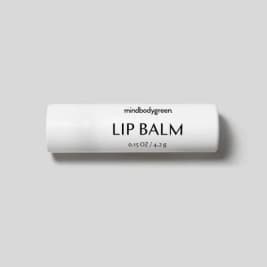Yes, Your Smile Changes As You Age & Here's Everything You Need To Know


I cannot overstate the importance of a healthy smile. Smiling is connected to mental and emotional health. Oral health is not only one of the most important parts of the digestive system, but it's linked to several other systems in the body including circulatory. In fact, oral inflammatory diseases are associated with higher rates of cardiac events!
And even from an aesthetic perspective, the smile is a foundational focal point for your face. A bright, full smile signifies vibrancy. And unfortunately, smiles change with time. Here are three of the major ways that a smile can age your overall appearance.
The volume deflates
Lips thin and lose volume with time. It's a natural part of the aging process and can be attributed to natural decreases in and under the skin, such as loss of collagen, fat, lipids, and humectants like hyaluronic acid1. When the natural production of these starts slowing, the skin will appear less plump and supple.
You can temporarily plump up the lips with balms and lip products. Most lip plumpers use ingredients to create a mild inflammatory or histamine response. This localized irritation can temporarily cause the lips to appear fuller, as it increases circulation to the area. Essentially, these ingredients cause lips to swell.
While these are fine to use on occasion, for long-term care we recommend looking for lip products infused with hyaluronic acid. Hyaluronic acid lip plumpers work by attracting and holding water in the epidermis, which creates a temporary flooding effect. Full with water, the lip area appears more voluminous.
Skin chaps easier
Skin gets drier with age because we lose important structural proteins, lipids, and humectants naturally found in the skin. When this decline happens, our skin barrier becomes compromised and it's not as effective at keeping water in the skin. So if you feel the skin on your lips is harder to keep smooth and supple than it was when you were younger, you're correct.
The only solution here is to be more diligent with lip balm application. Look for long-wear balms that combine humectants, emollients, and occlusive ingredients to give you that ideal hydration ratio.
Humectants (such as HA) are effective at attracting water, but they need to be paired with emollients and occlusives in order to keep said water in the skin. Look for emollients that can nurture and replenish the barrier—helping fill in cracks and soothe chapped skin.
Shea butter, for example, has been shown to seal moisture into the skin and protect the barrier2. One study suggests it has similar topical effects as ceramides3, polar lips that are a vital part of the skin barrier function. Or castor oil is high in fatty acids, including ricinoleic acid which is shown to soothe dry patches of skin4 and help skin recover from irritation.
Finally, you'll want occlusive ingredients (such as waxes) to create a comforting barrier on top.
Lip line becomes less defined
The lip line, that area of skin that separates the lips from the rest of the face, loses sharpness overtime. This is mainly due to the formation of lip lines. Tiny, faint fine lines start to form around the lip line due to regular movement (you know, talking).
You may notice this more if you're a lipstick wearer, as the makeup will often bleed or feather into the skin around the lips.
As these are wrinkles, you'll want to treat them as you would other types of wrinkles you encounter. The first step is to keep lips protected from UV exposure by wearing SPF on the area. You'll also want to keep them moisturized, as dry skin shows signs of aging more prominently. Look for options that contain antioxidants, as those can help reduce free radical damage and signs of aging.
But to help reverse the look of fine lines, you'll want more potent interventions. Lip exfoliators formulated with AHAs, for example, have been shown to5 increase skin cell turnover, improve the moisture content of the skin, and reduce the appearance of fine lines. Or go one step further with a lip retinol, the superstar aging ingredient that boosts collagen production and improves skin cell rejuvenation.
If you opt for either of the last two ingredients, just be sure to have a hydrating lip balm on hand to buffer any irritation, as these are potent ingredients.

Alexandra Engler is the beauty director at mindbodygreen and host of the beauty podcast Clean Beauty School. Previously, she's held beauty roles at Harper's Bazaar, Marie Claire, SELF, and Cosmopolitan; her byline has appeared in Esquire, Sports Illustrated, and Allure.com. In her current role, she covers all the latest trends in the clean and natural beauty space, as well as lifestyle topics, such as travel. She received her journalism degree from Marquette University, graduating first in the department. She lives in Brooklyn, New York.
5 Sources
- https://www.ncbi.nlm.nih.gov/pmc/articles/PMC3583886/
- https://www.ncbi.nlm.nih.gov/pmc/articles/PMC5796020/
- https://www.ncbi.nlm.nih.gov/pubmed/26314567
- https://www.sciencedirect.com/topics/nursing-and-health-professions/ricinoleic-acid#:~:text=Ricinoleic%20acid%2C%20the%20major%20constituent,skin%20and%20acne%20%5B130%5D.
- https://www.ncbi.nlm.nih.gov/pubmed/19245467

